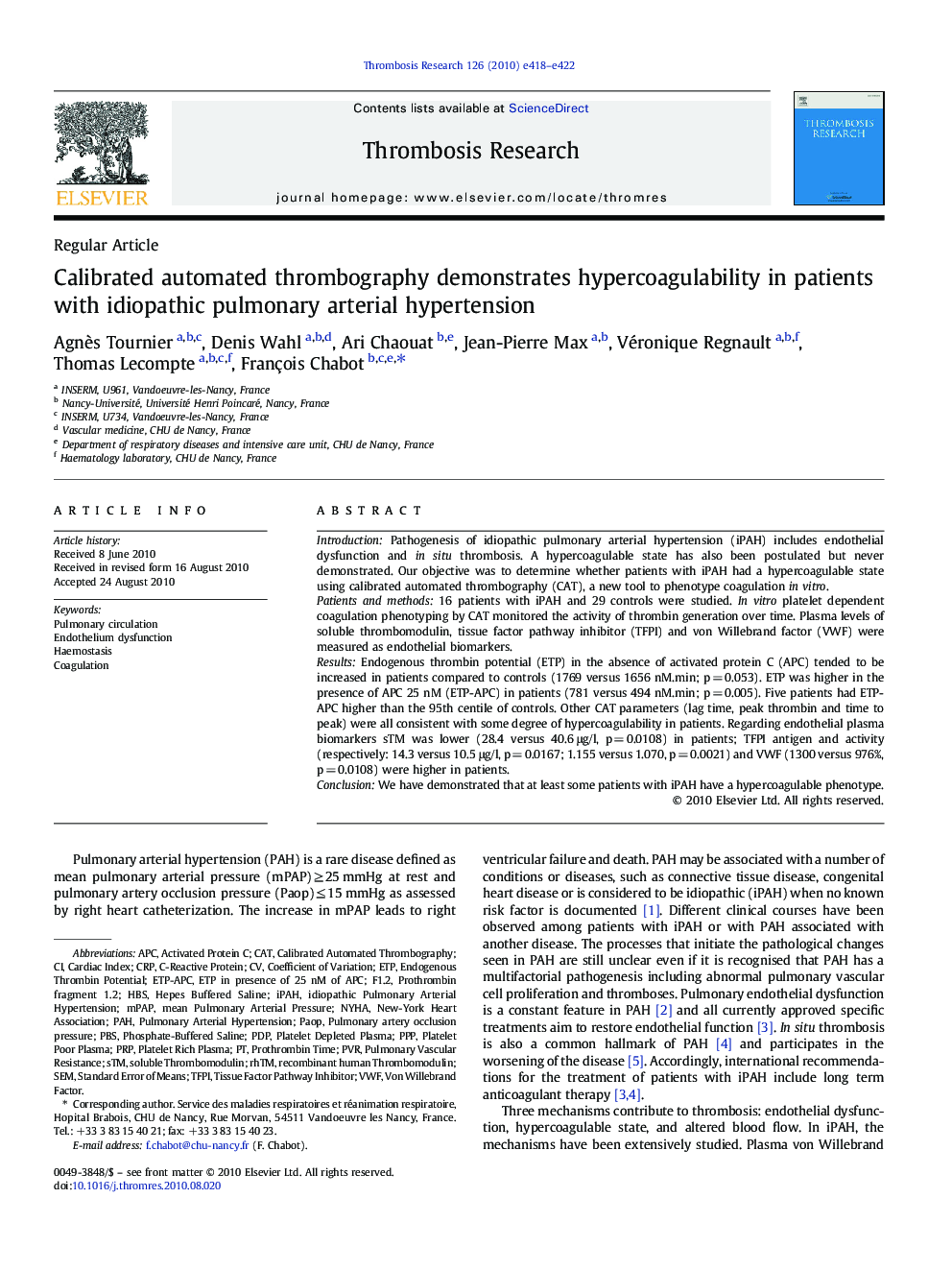| Article ID | Journal | Published Year | Pages | File Type |
|---|---|---|---|---|
| 3029129 | Thrombosis Research | 2010 | 5 Pages |
IntroductionPathogenesis of idiopathic pulmonary arterial hypertension (iPAH) includes endothelial dysfunction and in situ thrombosis. A hypercoagulable state has also been postulated but never demonstrated. Our objective was to determine whether patients with iPAH had a hypercoagulable state using calibrated automated thrombography (CAT), a new tool to phenotype coagulation in vitro.Patients and methods16 patients with iPAH and 29 controls were studied. In vitro platelet dependent coagulation phenotyping by CAT monitored the activity of thrombin generation over time. Plasma levels of soluble thrombomodulin, tissue factor pathway inhibitor (TFPI) and von Willebrand factor (VWF) were measured as endothelial biomarkers.ResultsEndogenous thrombin potential (ETP) in the absence of activated protein C (APC) tended to be increased in patients compared to controls (1769 versus 1656 nM.min; p = 0.053). ETP was higher in the presence of APC 25 nM (ETP-APC) in patients (781 versus 494 nM.min; p = 0.005). Five patients had ETP-APC higher than the 95th centile of controls. Other CAT parameters (lag time, peak thrombin and time to peak) were all consistent with some degree of hypercoagulability in patients. Regarding endothelial plasma biomarkers sTM was lower (28.4 versus 40.6 μg/l, p = 0.0108) in patients; TFPI antigen and activity (respectively: 14.3 versus 10.5 μg/l, p = 0.0167; 1.155 versus 1.070, p = 0.0021) and VWF (1300 versus 976%, p = 0.0108) were higher in patients.ConclusionWe have demonstrated that at least some patients with iPAH have a hypercoagulable phenotype.
